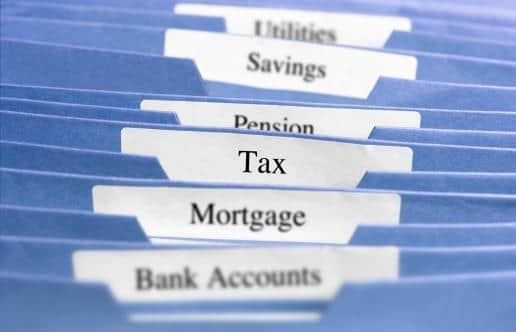John McLaren: There isn’t a cat in hell's chance of a serious lowering of the tax burden
Even the £30 billion of tax cuts promised by new Prime Minister Liz Truss just takes tax revenue as a share of GDP back to the post war effort peak of 35 per cent seen in 1968-69, and which was very much a one off, falling back below 30 per cent by 1972-73.
It wasn’t until 2003-04 that the tax burden started to remain consistently above 32 per cent of GDP and in the latest (March) Office for Budget Responsibility (OBR) forecasts this reaches 36 per cent by next year and stays there.
Advertisement
Hide AdAdvertisement
Hide AdWhat has caused the recent shift to a higher tax state is a combination of rising expenditure pressures, particularly relating to the NHS, even pre-pandemic, and falling productivity, which leads to a more slowly growing economy.


With the growth in government spending consistently matching, or exceeding, the growth in the economy - from which revenues are extracted - then the tax take needs, somehow, to rise accordingly.
Of course, that doesn’t have to mean that the basic rate of Income Tax rises and generally it hasn’t. Other, less high profile, taxes have borne the brunt of it, like National Insurance and VAT.
What would be needed to achieve a lower tax economy? Essentially a productivity renaissance. The decline in productivity, especially post the Great Recession of 2008-09, has led to real GDP growth rates of only one to two per cent, which are forecast to continue by the OBR.
How quickly could a productivity revival take place? Probably not very quickly. If we had a firm grip on what the problem was we’d be doing something about it, as would almost every other country in the OECD. The truth is there may be little we can do. Some more public and private investment would help but how to kick start the real motor - ‘total factor productivity’ i.e. greater efficiency and innovation - remains a mystery.
Even if productivity does return, it will be a challenge to cut the overall tax burden as we have costly on-going, or new, spending commitments towards: the NHS; care for the elderly; triple locked pensions; achieving net zero; boosting defence, post Ukraine; and infrastructure catch up investment.
Some of these, longer-term, fiscal pressures, though not all, were looked at by the OBR earlier this year and projections made looking as far forward as 2070. It doesn’t make for pretty reading.
“Overall, the primary balance (i.e. the difference between Government’s revenue and what it is spending, not including debt payments) deteriorates by 11.4 per cent of GDP (£287 billion in today’s terms) between 2026-27 and 2071-72, with higher health spending contributing 6.7 per cent of GDP, higher social care spending 1.1 per cent of GDP, higher pensions spending 3.0 per cent of GDP, and lower motoring taxes 1.5 per cent of GDP.
Advertisement
Hide AdAdvertisement
Hide AdThe continuously rising deficit means that net debt increases from 84 per cent of GDP in 2026-27 to 100 per cent in 2052-53 and then rises rapidly to 267 per cent of GDP by 2071-72.”
Clearly this is unsustainable and the OBR estimate that “a fiscal adjustment to the level of spending or tax of 1.5 per cent of GDP every decade” would be needed.
That’s in the long-term but short-term prospects are just as bad or even worse. Which means that, post the election of a new Prime Minister, there isn’t a cat in hell’s chance of a serious lowering of the tax burden. To take taxes down to a ‘golden age’ level of 30 per cent of GDP would cost a sixth of all tax revenues, even back down to the recent 32 per cent level would forego over £100 billion of revenues. The UK just can’t afford it.
Hardliners can froth all they like about a return to ‘true conservatism’ but no PM is going to risk the wrath of the public by cutting back on core services now or anytime soon.
In Scotland, the likelihood of taxes remaining high, or going higher, is even stronger than for the UK as a whole, for three reasons. First, Scotland’s population is ageing faster than the UK’s. Second, its economy is growing more slowly. Third, its benefit payments are increasingly more generous.
Things don’t get any easier with independence either, in fact considerably harder unless the price of oil stays well above $100 a barrel.
Politicians from the right can pretend that they support a low tax regime but, unless they are very badly advised, they will know that is not how the future will shape up.
Instead, it will probably revolve around keeping talismanic tax rates - like the basic rate of Income Tax - down, while more and more households are sucked into higher tax bands by freezing thresholds. With inflation remaining well above target the Treasury will hoover up a lot more money in this way.
Advertisement
Hide AdAdvertisement
Hide AdMeanwhile, politicians from the left may avoid the tricky ideological issue but they will still face the same problematic decisions of which taxes to raise and by how much.
A higher tax burden might be best seen as part of a new phase of economic and social development, one where productivity has fallen back and populations are ageing, so turning some of the post war, growth propelling, tailwinds into, growth slowing, headwinds.
Comments
Want to join the conversation? Please or to comment on this article.
